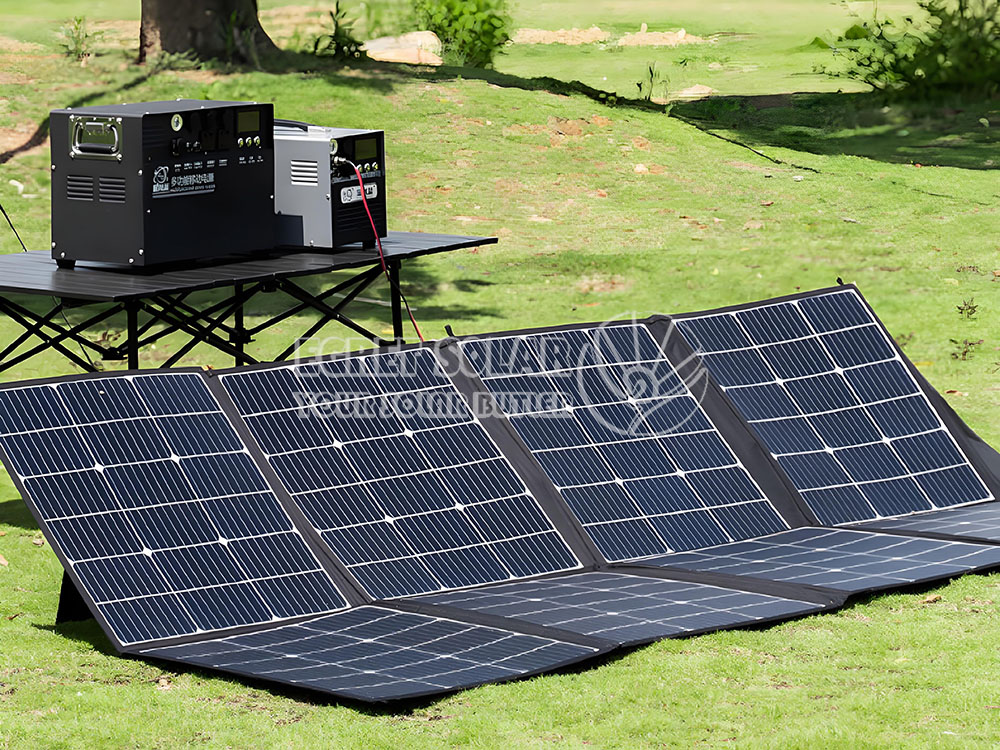- English
- Español
- Português
- русский
- Français
- 日本語
- Deutsch
- tiếng Việt
- Italiano
- Nederlands
- ภาษาไทย
- Polski
- 한국어
- Svenska
- magyar
- Malay
- বাংলা ভাষার
- Dansk
- Suomi
- हिन्दी
- Pilipino
- Türkçe
- Gaeilge
- العربية
- Indonesia
- Norsk
- تمل
- český
- ελληνικά
- український
- Javanese
- فارسی
- தமிழ்
- తెలుగు
- नेपाली
- Burmese
- български
- ລາວ
- Latine
- Қазақша
- Euskal
- Azərbaycan
- Slovenský jazyk
- Македонски
- Lietuvos
- Eesti Keel
- Română
- Slovenski
- मराठी
- Srpski језик
What are the photovoltaic conversion efficiency and durability of Folding PV Systems?
2024-06-24
With the increasing global demand for renewable energy sources, photovoltaic (PV) systems are playing an increasingly crucial role in the energy market. While traditional fixed PV systems have been widely adopted, they occupy significant space and are limited by installation positions and environmental constraints. The emergence of Folding PV Systems has introduced new possibilities for flexible applications of PV systems. So, how does the photovoltaic conversion efficiency of Folding PV Systems compare to traditional fixed systems? And how does the performance of PV panels fare during frequent folding and unfolding?

Comparison of Photovoltaic Conversion Efficiency
The photovoltaic conversion efficiency of Folding PV Systems compared to traditional fixed systems primarily depends on the PV cell technology used. Current PV cells on the market include monocrystalline silicon, polycrystalline silicon, and thin-film cells. Monocrystalline silicon cells offer higher conversion efficiency, typically between 18-22%; polycrystalline silicon cells are slightly lower, around 15-18%; and thin-film cells have even lower efficiency, approximately 10-12%.
If Folding PV Systems use monocrystalline silicon cells, their conversion efficiency is comparable to that of fixed systems. In fact, the main advantage of folding systems lies in their flexibility and portability rather than enhancing conversion efficiency. However, due to the ability of folding systems to adjust angles flexibly for optimal sunlight exposure, theoretically, they may outperform fixed systems under certain conditions.
Impact of Frequent Folding on PV Panel Performance
Folding PV Systems are designed with frequent folding and unfolding in mind. Therefore, the materials and structure of folding PV panels must possess high durability. Key components of folding PV panels include flexible solar cells, durable backing materials, and reliable electrical connectors.
Flexible solar cells: These typically use polymer materials as substrates, which are lighter and more flexible compared to traditional glass substrates, helping to reduce damage from folding.
Durable backing materials: High-quality backing materials provide excellent mechanical support and withstand environmental factors such as humidity and temperature changes.
Reliable electrical connectors: The demands of frequent folding and unfolding require advanced electrical connection technologies, such as flexible cables and durable bend-resistant connectors, to minimize losses and failure risks during folding processes.
Despite considerations for durability in design and material selection, long-term mechanical stress from frequent folding can still affect PV panel performance. Issues such as fatigue damage at connection points, material aging, and the formation of microcracks can lead to efficiency degradation. Therefore, Folding PV Systems require regular maintenance and inspections to ensure sustained high performance.
In conclusion, Folding PV Systems generally achieve photovoltaic conversion efficiency comparable to traditional fixed systems, depending on the type of PV cells used. Their primary advantage lies in flexibility and portability, making them particularly suitable for temporary or mobile applications. However, the challenge of maintaining durability during frequent folding and unfolding processes necessitates the use of high-quality materials and advanced designs. Looking ahead, with advancements in materials science and manufacturing technology, Folding PV Systems are poised to play a more significant role in various fields while further enhancing their reliability and efficiency.




